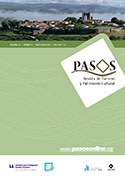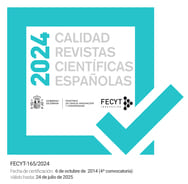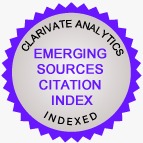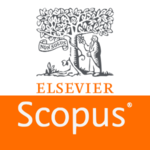Girona as a Case Study: Heritage Tourism Scenarios in the Transition from Pre-COVID-19 to Post-Pandemic
DOI:
https://doi.org/10.25145/j.pasos.2025.23.033Keywords:
Pre-COVID, post-COVID, pandemic, crisis, heritage cityAbstract
This article explores the evolution of tourism in the historic city of Girona, covering the period from before the COVID19 pandemic to the post-COVID era. Through an analysis of diverse variables, significant changes in the city are observed: from a sustained period of tourism growth to a sharp decline due to the health crisis, followed by a gradual recovery that began in May 2021. In addition to the fluctuation in tourist arrivals, the study analyses how the pandemic impacted other related sectors, such as accommodation, dining, and commerce, with a special focus on key events like the Temps de Flors Festival and Temporada Alta (the high season), which played a crucial role in the reactivation of local tourism. This article provides empirical data and analysis that not only reflect Girona's resilience in the face of the crisis but also offer valuable insights for managing urban tourism in contexts of crisis and recovery.
Downloads
Publication Facts
Reviewer profiles N/A
Author statements
- Academic society
- PASOS. Revista de Turismo y Patrimonio Cultural
- Publisher
- Instituto Universitario de Investigación Social y Turismo. Universidad de La Laguna (España) - Instituto Universitario da Maia ISMAI (Portugal)
References
Bae, S. Y., & Chang, P. J. (2021). The effect of coronavirus disease-19 (COVID-19) risk perception on behavioural intention towards ‘untact’tourism in South Korea during the first wave of the pandemic (March 2020). Current Issues in Tourism, 24(7), 1017-1035.
Bai, H., & Ran, W. (2022). Analysis of the vulnerability and resilience of the tourism supply chain under the uncertain environment of COVID-19: Case study based on Lijiang. Sustainability, 14(5), 2571.
Bertocchi, D., & Visentin, F. (2019). ‘The overwhelmed city’: Physical and social over-capacities of global tourism in Venice. Sustainability, 11(24), 6937.
Bosone, M., & Ciampa, F. (2021). Human-centred indicators (HCI) to regenerate vulnerable cultural heritage and landscape towards a circular city: from the Bronx (NY) to Ercolano (IT). Sustainability, 13(10), 5505.
Canestrelli, E., & Costa, P. (1991). Tourist carrying capacity: A fuzzy approach. Annals of tourism research, 18(2), 295-311.
Dodds, R., & Butler, R. (2019). The phenomena of overtourism: A review. International Journal of Tourism Cities, 5(4), 519-528.
Donaire, J. A. & Galí, N. (2021). Fast Look. The sightseeing ritual in monumental cities. RITUR-Revista Iberoamericana de Turismo, 11(2), 112-125.
Donaire, J. A., Galí, N., & Camprubi, R. (2021). Empty summer: International tourist behavior in Spain during COVID-19. Sustainability, 13(8), 4356.
Dogru, T., Marchio, E. A., Bulut, U., & Suess, C. (2019). Climate change: Vulnerability and resilience of tourism and the entire economy. Tourism Management, 72, 292-305.
Euromonitor Internacional (2021). Top 100 cities destinations 2021 Ediion.
Euromonitor Internacional (2019). Top 100 cities destinations 2019 Edition.
Exceltur (2022). Barómetro de la rentabilidad de los destinos turísticos españoles. Recuperado de: https://www.exceltur.org/wp-content/uploads/2022/11/Baro%CC%81metro-Rentabilidad-Verano-2022.pdf
Galí, N. (2022). Impacts of COVID-19 on local tour guides. Journal of tourism and cultural change, 20(6), 788-805.
Galí, N., Donaire, J. A., Martínez, E., & Mundet, L. (2015). Turistas entre monumentos. El comportamiento de los visitantes en el centro histórico de Girona (2003 y 2013). RITUR-Revista Iberoamericana de Turismo, 5(2), 70-84.
Galí, N. & Benito, J. A. D. (2006). Visitors' behavior in heritage cities: The case of Girona. Journal of Travel Research, 44(4), 442-448.
Gámez, A., Ivanova, A., & Campiranon, K. (2012). Tourism, vulnerability, and economic crisis within APEC: responses from international destinations–Phuket, Thailand and Los Cabos, Mexico. WIT Trans. Ecol. Environ, 161, 91-101.
Gössling, S., Scott, D., & Hall, C. M. (2020). Pandemics, tourism and global change: a rapid assessment of COVID-19. Journal of Sustainable Tourism, 1-20.
Hall, C. M., Scott, D., & Gössling, S. (2020). Pandemics, transformations and tourism: Be careful what you wish for. Tourism geographies, 22(3), 577-598.
Harrington, R. D. (2021). Natural disasters, terrorism, and civil unrest: crises that disrupt the tourism and travel industry-a brief overview. Worldwide Hospitality and Tourism Themes, 13(3), 392-396.
Higgins-Desbiolles, F. (2020). Socialising tourism for social and ecological justice after COVID-19. Tourism Geographies, 22(3), 610-623.
Jeon, C. Y., & Yang, H. W. (2021). The structural changes of a local tourism network: Comparison of before and after COVID-19. Current Issues in Tourism, 24(23), 3324-3338.
Kim, J., & Lee, J. C. (2020). Effects of COVID-19 on preferences for private dining facilities in restaurants. Journal of Hospitality and Tourism Management, 45, 67-70.
Koens, K., Postma, A., & Papp, B. (2018). Is overtourism overused? Understanding the impact of tourism in a city context. Sustainability, 10(12), 4384.
Li, Z., Zhang, S., Liu, X., Kozak, M., & Wen, J. (2020). Seeing the invisible hand: Underlying effects of COVID-19 on tourists’ behavioral patterns. Journal of Destination Marketing & Management, 18, 100502.
Liu, A., & Pratt, S. (2017). Tourism's vulnerability and resilience to terrorism. Tourism Management, 60, 404-417.
Mao, C. K., Ding, C. G., & Lee, H. Y. (2010). Post-SARS tourist arrival recovery patterns: An analysis based on a catastrophe theory. Tourism Management, 31(6), 855-861.
Milano, C. (2018). Overtourism, malestar social y turismofobia. Un debate controvertido. PASOS Revista de Turismo y Patrimonio Cultural, 16(3), 551-564.
Milano, C., Novelli, M., & Cheer, J. M. (2019). Overtourism and tourismphobia: A journey through four decades of tourism development, planning and local concerns. Tourism Planning & Development, 16(4), 353-357.
Mínguez, C., Piñeira, M. J., & Fernández-Tabales, A. (2019). Social vulnerability and touristification of historic centers. Sustainability, 11(16), 4478.
Ntounis, N., Parker, C., Skinner, H., Steadman, C., & Warnaby, G. (2022). Tourism and Hospitality industry resilience during the Covid-19 pandemic: Evidence from England. Current Issues in Tourism, 25(1), 46-59.
Pla Estratègic de Turisme de Girona. Accions per un Turisme sostenible i de qualitat 2018-2022. (2018). Recuperado de: https://web.girona.cat/promocio/platurisme
Piñeira, M. J., Tabales, A. F., & Minguez, C. (2020). Vulnerabilidad y turistificación: ¿quiénes son los perdedores del centro urbano? Monografies de la Societat d'Història Natural de les Balears, 31, 83-98.
Qin, F., & Chen, G. (2022). Vulnerability of Tourist Cities’ Economic Systems Amid the COVID-19 Pandemic: System Characteristics and Formation Mechanisms—A Case Study of 46 Major Tourist Cities in China. Sustainability, 14(5), 2661.
Qiu, R. T., Park, J., Li, S., & Song, H. (2020). Social costs of tourism during the COVID-19 pandemic. Annals of tourism Research, 84,102994.
Ramirez, L. E., Moreno, P. V., May, A. D. Á. P., & Eligio, M. V. (2022). La Situación económica del Turismo comunitario en Candelaria, Campeche post COVID-19. Ara: Revista de Investigación en Turismo, 12(1), 106-127.
Romero-Padilla, Y., Romero-Martínez, J. M., & Navarro-Jurado, E. (2020). Reflexiones desde el post-crecimiento: ideas, estrategias y tácticas para el turismo post-covid-19. Turismo post Covid, 19.
Rosselló, J., Becken, S., & Santana-Gallego, M. (2020). The effects of natural disasters on international tourism: A global analysis. Tourism management, 79, 104080.
Russo, A. P. (2002). The “vicious circle” of tourism development in heritage cities. Annals of tourism research, 29(1), 165-182.
Sun, Y. Y., Sie, L., Faturay, F., Auwalin, I., & Wang, J. (2021). Who are vulnerable in a tourism crisis? A tourism employment vulnerability analysis for the COVID-19 management. Journal of Hospitality and Tourism Management, 49, 304-308.
Seraphin, H., Sheeran, P., & Pilato, M. (2018). Over-tourism and the fall of Venice as a destination. Journal of Destination Marketing & Management, 9, 374-376.
Tsai, C. H., Wu, T. C., Wall, G., & Linliu, S. C. (2016). Perceptions of tourism impacts and community resilience to natural disasters. Tourism Geographies, 18(2), 152-173.
UNWTO (2018), “Overtourism”? Understanding and Managing Urban Tourism Growth Beyond Perceptions,UNWTO, Madrid.
Van der Borg, J., Costa, P., & Gotti, G. (1996). Tourism in European heritage cities. Annals of tourism research, 23(2), 306-321.
Wen, J., Kozak, M., Yang, S., & Liu, F. (2020). COVID-19: potential effects on Chinese citizens’ lifestyle and travel. Tourism Review, 76(1), 74-87.
Downloads
Published
How to Cite
Issue
Section
License
Copyright (c) 2024 Nuria Galí

This work is licensed under a Creative Commons Attribution-NonCommercial-NoDerivatives 4.0 International License.
I confirm that the work is original (of my/our authorship), and that it will not be submitted to other journals or publications until the final resolution of the review process in PASOS, RTPC.
I authorize the publication of my work by PASOS, PSTN of free and open access in any of the formats that I deem appropriate, for an indefinite period of time and as a non-remunerated collaboration.
Likewise, the author(s) understands that the published work may be linked or deposited on any server or included in other publications (republication), provided that the new place and/or new edition references the original publication and acknowledges the authorship and copyright ownership of PASOS RTPC publications.
Authors understand that a plagiarism-self-plagiarism check will be performed, and the article may be removed at any time from the editorial flow.










